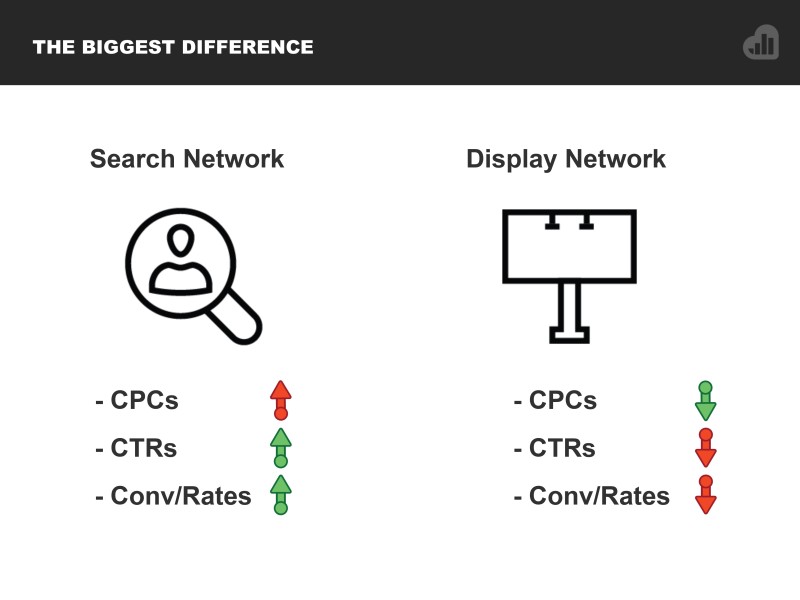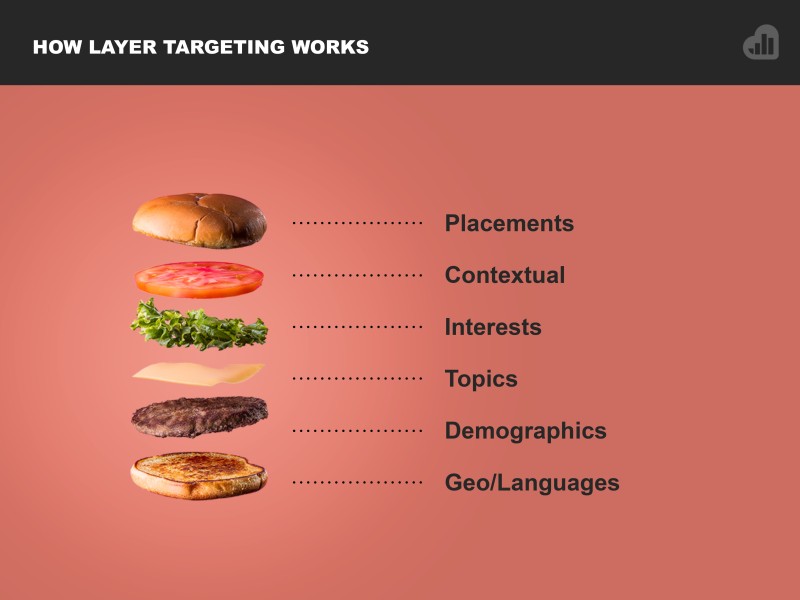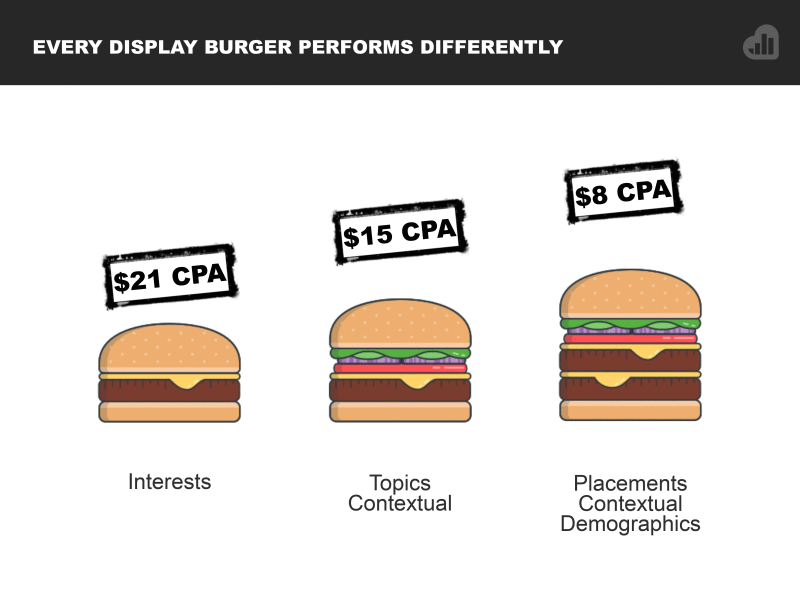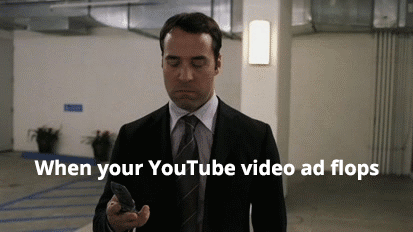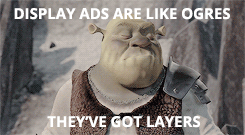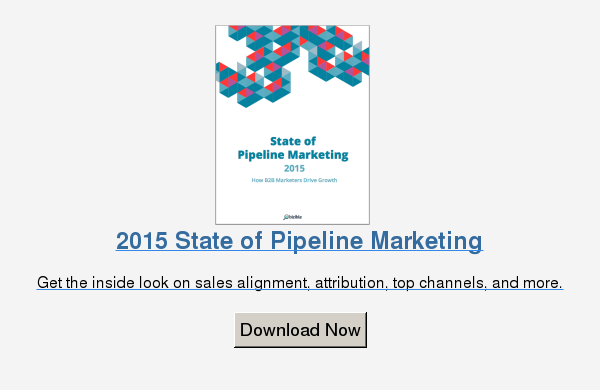Display advertising is a bit of a mystery. You’re paying for impressions and clicks on sites you don’t own. You have countless referral sites and it is entirely onerous to track the opportunities and revenue generated from each display ad.
It’s an investment with little transparency into its effects on the bottom line.
But this doesn’t have to be the case with display ads in B2B marketing. In this post we’ll describe some best practices with help from online marketing experts. We’ll also talk about getting transparency into your display advertising so you can see its true impact on revenue.
Display Ads Basics For B2B Marketers
Display ads differ from search ads in a number of ways. With display advertising you can target people based on very specific interests.
Your target audience may work in IT and although they love web security, they also might love a handful of technology news sites. This is where display ads come in handy. With displays ads you can target the niche sites that your prospects are likely to frequent.
Compared to search ads, display ads have lower cost-per-clicks (CPCs), but also lower click-through-rates (CTR) and lower conversion rates. Display is primarily used for brand awareness and you can upload email lists to “warm up” leads to your brand prior to sales outreach.
Getting Up And Running With Targeting Display Ads
Display ads differ from paid search ads due to the different options you have for placing ads. It’s an exercise in finding the right combinations of filters and sites to display your ads.
How do you do this? To answer this question we’ll rely on Johnathan Dane, CEO and founder of PPC agency, KlientBoost.
In a recent KissMetrics webinar, Dane advises the following display ad strategies.
1. Learn Where Your Competitors Are Showing Display Ads
A tool that media planners use to gain intelligence on their competition is WhatRunsWhere. Simply type in your competitor’s site and you can see the media buying channels they use, publisher sites they run ads on, ad volumes for each site, and even images of the ad itself, with ad strength rating (based on how long the ad has been shown).
2. Think In Layers
Dane says there are several layers you can combine interchangeably to target the right audience on display networks. Filtering your ad placements on these layers will help you find the right audience and lower your CPC.
Placements layer: The placement layer defines which sites(s) your ads appear in. Will they appear on CNN or TechCrunch? Your ad placements are important for understanding which sites your ads perform well in and identify those sites where you don’t want your ads to appear in.
Contextual layer: The the contextual layer simply means you give Google a list of keywords and Google will choose the sites your ads will show up on. For example, if your keywords are related to sports, your ads will show up on sports websites.
Interest Layer: Google has identified specific groups of people based on their site viewing behavior. These are interest groups. For example, people who love to travel or love to cook. It’s another layer for testing and identifying the most relevant audience for your brand.
An important distinction marketers need to make is between the two kinds of interest groups. There is the affinity group and the in-market group. The affinity group are people who love a specific topic, and keep up with the latest news and bloggers. Then there is the in-marketing group, which are people who are ready to buy and are actively researching. Test these two ad groups and see which one works for you.
Topics Layer: In the topics layer, you can group your audiences into topic groups. For example, you can target finance professionals who read the Wall Street Journal, but are also likely to follow topics like cars, sports and technology. You can target these topics as well on display networks.
Demographics Layer and Geographic Layer: Pretty self explanatory here. Age, gender and location are all filters you can use to narrow down your targeting.
When you’re managing a display ad campaigns remember the layers and remember that the more layers you use the smaller the audience and the more likely your ads will resonate. Or simply remember it’s a lot like a burger.
3) Know The Media Buying Options Available To You
There are numerous media buying channels available to you. There are non-Google display networks, Youtube video ads, and Gmail sponsored promotions.
Youtube Ads: Video ads need to get attention within the first three seconds and are generally expensive to test. You can test headlines easier than you can shoot a new video ad. Dane suggests services like Fiverr or WickVideo that can help you create low-cost videos for testing.
In terms of targeting your B2B video ads, target entrepreneurial shows or how-to videos. Ask yourself what a business owner or marketer would likely be watching.
Video ads are like Hollywood movies, you never want to take a gamble on a high-cost production, then have it flop at the box office. If this happens to you, you’ll likely have the same reaction as Ari Gold, the studio head in Entourage.
Gmail sponsored ads: On Gmail sponsored ads, Dane says you can have your ads show when your audience gets an email from one of your competitors. He’s had clients succeed with these ads and they may be worth a test for your brand.
You can target your competitors email domains in the contextual layer, using your competitor’s domain as the target keyword. In the placement layer you would choose mail.google.com
Conferences and tradeshows are highly important revenue drivers in many B2B industries. So if there is a conference or tradeshow the draws in your target prospects you can target the domain and keywords related to the conference or tradeshow. Then your ads will appear in event sponsored emails.
Our recent State of Pipeline Marketing report explains just how important events and conferences, compared to other channels, are in B2B marketing. Additionally, you can read our industry analysis comparing channels like events, paid search and SEO.
You now have an understanding of the options and tactics at your disposal. Next, let’s talk about some of the high level strategies that will aid you in your B2B marketing endeavors.
3 Ways To Measure The Value Of Display Ads
There are three levels of measurement for display ads. Again, think in layers. At the most basic level are marketers who use only Google AdWords to measure performance. AdWords alone is sufficient for marketers who only want to know whether their ads are being seen and if they are generating clicks and form fill outs. It’s the infrastructure for effective online advertising.
AdWords Only Tactic
In this single-tool approach, marketers place a conversion pixel on a “thank you” page and measure lead volume. According to our resident paid media expert, Eva Sharf, there are a couple drawbacks to this approach.
The drawback of this method is double counting leads. Conversions are counted every time a person fills out a form, if you have multiple pieces of content there is no way to identify who downloaded which piece.
In addition to duplicate leads, there is no way to measure lead quality when using the single-tool approach. Do you want to generate clicks from qualified buyers? Do you want to engage with an audience that has a certain level of savvy? Without connecting your AdWords data to a marketing attribution system there is no way to measure how well your display campaigns are generating qualified leads.
The Marketing Automation Connection Tactic
The dual-tool approach uses marketing automation and AdWords. Using this method marketers can connect clicks to leads inside their automation tool and know which ads the leads came through. While this is a the next step towards gaining an understanding of the value of display ads, there are still a few gaps.
The dual tool approach shows marketers which ads created leads but does not show funnel velocity, i.e. how the lead engages with media from the top to the bottom of the funnel.
When marketers connect their automation tool to AdWords they take a major step forward in understanding the effectiveness of their ads in terms of lead generation.
The Marketing Attribution Tactic
The last step in gaining a full understanding how effective your ad spend is when investing in display ads is to use AdWords, marketing automation and a marketing attribution solution.
This three-system approach gives the most complete view into the effectiveness of display ads.
Marketing attribution connects top-of-funnel metrics like view-through impressions all the way to closed won deals.
Attribution aligns every touch point, such as views, lead conversion, and sales opportunity conversion. Marketers know which ads generated a first click or which ads lead to an opportunity conversion.
This is especially important for B2B marketers who need to understand the customer journey through a long sales cycle. It’s also important for dealing with multiple stakeholders from a single account (or deal). By aligning prospects into accounts and aligning touch points in the correct order, marketers can know which ads influenced prospects and which ads don’t.
The “attribution” portion improves on the first or last-click attribution models available in the single or dual tool approach. Marketers who use the three systems approach can do multi-touch attribution and understand how display ads — and the exact websites they display on — generate revenue and influence deals.
Layering your marketing tools is how you gain a full understanding of your spending on AdWords. It’s how marketers identify which campaigns they can turn off and put those dollars into campaigns that work. Like the layering used to target your audience groups, you can layer on marketing automation and marketing attribution on top of your AdWords to become a more effective marketer.
Ready For Display Ad Success?
It’s not an easy channel, but it offers targeting layers that are unique. To set yourself up for success remember these handy tips:
Periodically check what websites your ads show up on. You should exclude sites and apps you don’t want to appear on. You should run placement specific campaigns to compare which sites are frequented by your the audience that is most likely to click on your ad.
Use AdWords customer match. When you upload an email list to AdWords and create a custom audience group to target your display ads. This is a great tactic for warming leads you plan on calling. You can even create lists based on key accounts.
Understand the long term value of display advertising. Wasteful ad spending is a sin. By connecting your AdWords account to automation and an attribution solution you can understand how impressions and lead conversions actually influenced the most important marketing metric: revenue.
That’s about all for B2B display ads. Display ad success rests on thinking of it as a tasty burger or an angry ogre. Think of the layers.
